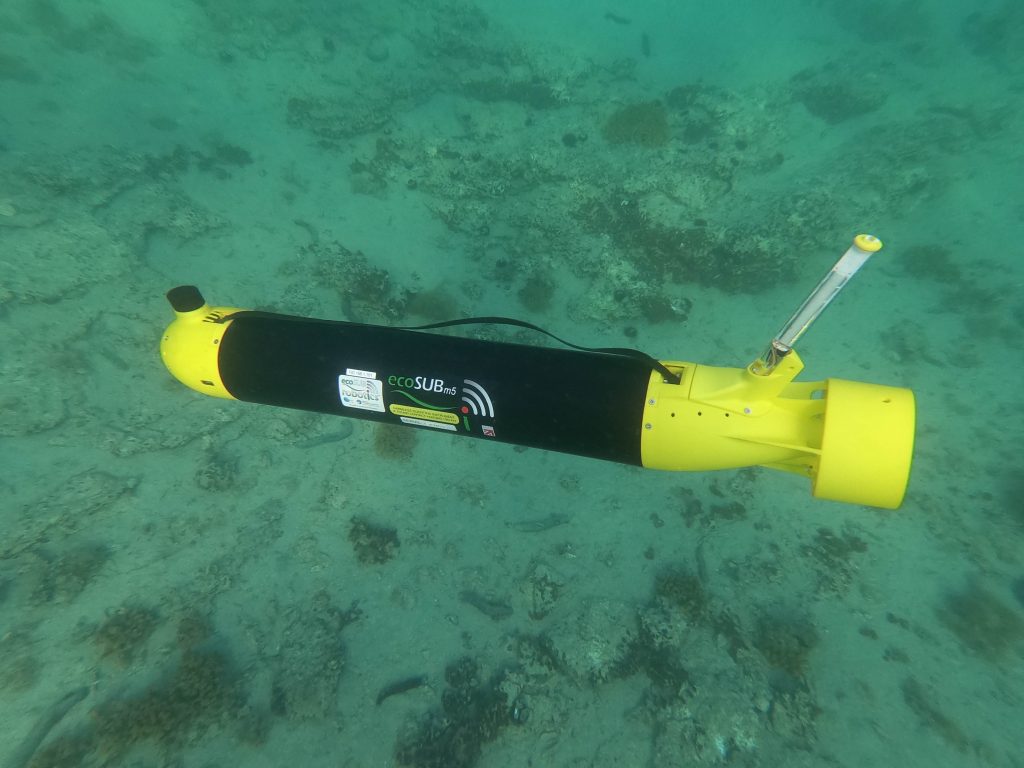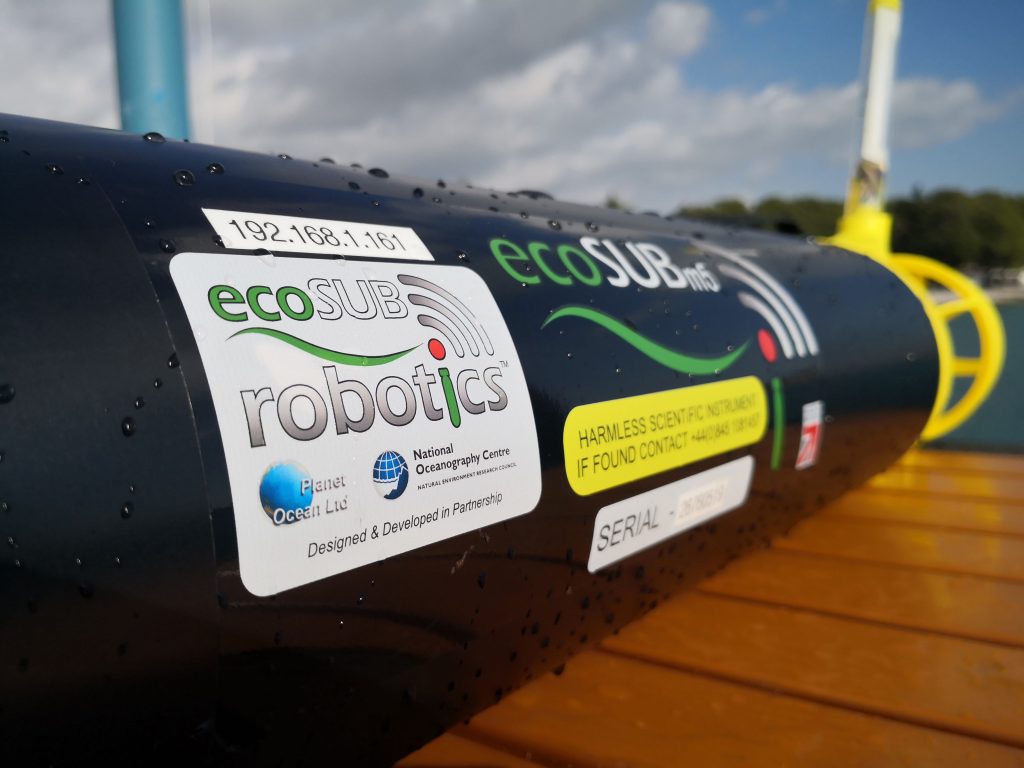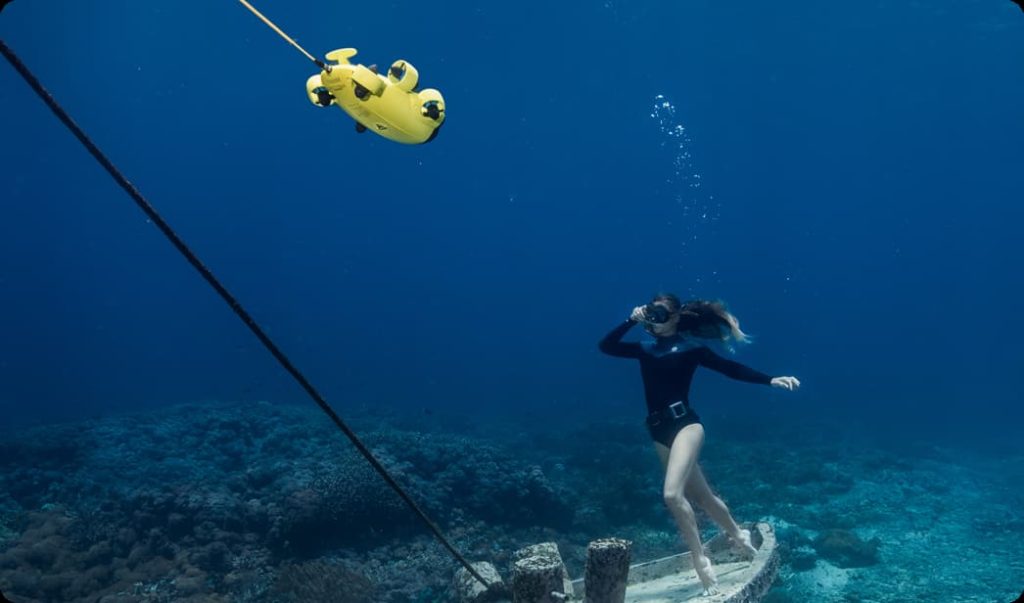3D Printing Industry is currently seeking feedback on material usage across the sector. Have your say in the Spotlight on Resin 3D Printing Survey now.
Marine technology specialist ecoSUB Robotics has revealed how adopting 3D printing in the production of its ‘ecoSUB’ has helped make the autonomous underwater vehicle (AUV) as accessible as possible.
While the ecoSUB is designed to offer users a uniquely affordable means of conducting deep sea monitoring missions, it still needs to be capable of operating at a depth of 2,500m, to meet the needs of its commercial and military clientele.
In order to strike this balance between efficiency and resilience, the AUV’s creators have therefore begun 3D printing its prototypes and a selection of its end-use components, in a way that has allowed them to make significant cost-per-part gains, without having to sacrifice on product quality.
“3D printing is preferred over injection molding as we find the technology more versatile, and the design freedom allows us to innovate great parts,” said Jeremy Sitbon, Chief Robotics Engineer, Marine Robotics Systems at ecoSUB Robotics. “Also, our volumes are low, so injection molding would not be economical. Add in the fact that with 3D printing we can customize designs for individual clients, and the choice is clear.”
“The parts that we use in our underwater vehicles have to be strong, robust and absolutely conform to design intent.”

Delving into the deep on a budget
Prior to being spun-out by Planet Ocean Limited in 2017, ecoSUB Robotics was effectively founded in 2015, as part of an Innovate UK and DSTL-backed project that included the R&D of the ‘ecoSUBu’ vehicle. Following the AUV’s successful launch and recovery, its creators later came up with a larger iteration known as the ‘ecoSUBm,’ which could carry heavier payloads, and attracted strong initial interest.
Since then, ecoSUB Robotics has set out on its own, while continuing to take advantage of wider advances in navigation and engineering technologies, to upgrade the capabilities of its submarine vehicle. Using modern micro-DVL technology, for instance, the firm says that its AUV is now able to better geo-reference data collected, enabling it to navigate with improved accuracy, and operate using side scan sonar.
Yet, despite the ecoSUB’s growing capabilities, its creators still see cost-efficacy as its chief USP. According to ecoSUB Robotics, traditional AUVs can cost north of £500,000, while its ‘ecoSUBu5’ system is cheap by comparison, at around £10,000. As a result, when it comes to applications in hostile environments, where the chances of vehicle loss is high, the firm says its device offers a far less risky option.
Even though the company has been accepting commercial AUV orders for two years now, it continues to invest in “re-spinning” many parts of its systems, to keep them as accessible and reliable as possible. This ongoing self-improvement approach has led it to partner with service bureau 3DPRINTUK, with which it has gone on to optimize the ecoSUB’s prototyping process, as well as its part cost.
“The reason that cost is so important to the company, is that they see enormous potential for their underwater vehicles not just to be used by professionals within the military and oil and gas sectors, but also research scientists gathering important information about climate change,” said Nick Allen, MD of 3DPRINTUK. “Price is key to making this advanced technology available to a wide user group.”

An AUV-optimizing partnership
In the process of adopting 3D printing, ecoSUB Robotics says that 3DPRINTUK has been an ideal partner, in that it has not only delivered parts to spec, but used its Design for AM (DfAM) expertise to help drive “maximal efficiency” from them.
Within its revised R&D workflow, this means that the company now orders small prototype batches from 3DPRINTUK, before integrating them into its marine vehicle. If they work as expected, the firm then goes on to request larger quantities of these parts via its partner’s SLS and MJF manufacturing services, using both powder bed fusion technologies to take advantage of the unique benefits of each.
“There are two different kinds of parts and components in the vehicles, external parts that can be seen, and internal parts that cannot,” explains Sitbon. “The external parts need to be yellow for the sake of visibility, and we use SLS for these as the technology produces whiter parts than MJF, and in our opinion this makes the addition of a color that much more definite and striking.”
By contrast, given that the AUV’s internal parts don’t need to be as visually appealing, ecoSUB Robotics says that it orders these via 3DPRINTUK’s MJF service, as it yields greyer components, but they tend to be less expensive.
Moving forwards, the firm anticipates that it will eventually address all its 3D printing needs with MJF, due to pricing considerations as well as the “more exacting tolerances” that can be made on jetted parts which lead to “improved detailing,” but in the short-term it remains more than happy to follow 3DPRINTUK’s advice on which technology is best to use.
“We will continue to use 3DPRINTUK as we have not found an online ordering system that comes close to theirs in terms of ease-of-use, and the team has an enormous depth of knowledge in material selection, DfAM and print optimization that benefits us on every level,” concluded Sitbon. “The assessment of SLS and MJF will [also] continue, and we are happy to be guided as to which process to use for internal and external applications by the 3DPRINTUK team.”

AM’s marine monitoring applications
Using 3D printing, it’s now possible to produce parts with the necessary resistance properties to enable their deployment within deep sea applications, and a number of firms have chosen to do so in recent years. Back in April 2020, QYSEA revealed that it was working with Farsoon to 3D print protective covers for its FIFiSH V6 ROV.
Likewise, Dive Technologies is also known to 3D print elements of its customizable ‘DIVE-LD’ deep-sea surveillance system. Having recently been bought over by Anduril Industries, it’s thought that the AUV could now have the backing required to address the marine monitoring needs of a wider array of clientele.
Norwegian robotics specialist Kongsberg Ferrotech, meanwhile, has unveiled plans not just to manufacture vehicles for subsea missions, but to 3D print on the ocean floor itself. Currently under development, the firm’s underwater manufacturing technology is set to be used for both repairing seabed-level pipelines, and rebuilding them where needed.
To stay up to date with the latest 3D printing news, don’t forget to subscribe to the 3D Printing Industry newsletter or follow us on Twitter or liking our page on Facebook.
For a deeper dive into additive manufacturing, you can now subscribe to our Youtube channel, featuring discussion, debriefs, and shots of 3D printing in-action.
Are you looking for a job in the additive manufacturing industry? Visit 3D Printing Jobs for a selection of roles in the industry.
Featured image shows ecoSUB Robotics’ AUV in-action. Photo via ecoSUB Robotics.



